"Standard" battleships of the USA, Germany and England. We consider armor penetration
What is the problem, actually? Let's see how most naval lovers (and not only) stories compare the armor penetration of certain guns. For example: one edition devoted, for example, to English dreadnoughts, contains information that the British 381-mm projectile of the World War I era punched 381-mm armor plate at a distance of about 70 cables. In another edition, already devoted to the German "capital" ships - that the German 380-mm shell similar to it "mastered" 350 mm armor only with 67,5 cables. From this, it would seem, that the English gun is more powerful - this is the conclusion that is made.
However, in fact, comparing such data in this way, it is very easy to be misled.
Was the above data obtained as a result of actual firing, or were they calculated according to armor penetration techniques? If these are the results of actual firing, were their conditions identical for both guns? If the armor penetration is calculated, then were the same techniques used? Are the data obtained the result of the work of specialists from the relevant ministries and departments, or is it the result of the calculations of historians who took the calculator? It is clear that in the second case the accuracy will be much lower ... There is no need to go far for examples: let's take S. Vinogradov's famous monograph, “Superdreadnoughts of the second Reich“ Bayern ”and“ Baden ””. In Annex No. XXUMX, the distinguished historian together with V.L. Kofman makes a large amount of calculations in order to compare the capabilities of the battleships “Reventzh” and “Bayern”. But alas, just look at the parameter table of 2-inch guns (p. 15) and we will see that according to the calculations of respected authors, the English 124-mm gun at 381 elevation angle has a range of 20,25 cables, that is, about 105 thousand. m. While foreign sources for the same initial speed (19,5 m / s) and a slightly smaller elevation angle (732 degrees) give significantly longer distances - 20-21,3 thousand meters. Of course, such deviations from real values negatively affect the results of calculations.
But even if the sources present the results of calculations by specialists, of whom there is no doubt about the accuracy, another factor arises that complicates the comparison: it’s about armor quality. It is clear that the same British, conducting calculations of armor penetration in the design of a dreadnought, used the corresponding indicators of English armor, the Germans - respectively, the German, etc. And the armor of different countries can vary in durability, but this is still half the problem: after all, in the individual country, the same Krupp armor has been constantly improved. Thus, it turns out that calculations of artillery systems, made, for example, in England, and seemingly using the same Krupp armor, but made at different times, may turn out to be incomparable. And if we add to this the almost complete absence of serious work on the evolution of armor in various countries of the world ...
In general, a more or less reliable comparison of armor penetration - the task is not so simple as it may seem at first glance. And, in an amicable manner, to a non-professional (who, no doubt, the author of this article is), it is better not to undertake this business. But, alas - to our deep regret, the pros are not in a hurry to tackle these issues, so ... as they say, in the absence of stamped paper, we write in simple.
Of course, it is no longer possible to conduct full-scale tests of the above-mentioned artillery systems today, so our destiny is calculations. And if so, then it is necessary to say at least a couple of words about the armor penetration formulas. Modern methods of calculation, if published, only in closed editions, and the popular literature usually gives the formula of Jacob de Marr. Interestingly, the professor of the Naval Academy L.G. Goncharov, in his textbook on the artillery case of 1932 release, called it the formula Jacob de Marr. This formula, along with many others, was very popular at the beginning of the last century, and I must say, it is quite accurate - perhaps it is even the most accurate among similar formulas of those years.
Its peculiarity lies in the fact that it is not physical, that is, it is not a mathematical description of physical processes. Formula de Marra empirical, it reflects the results of experimental shelling of iron and iron-steel armor. Despite this “unscientific,” the de Marr formula showed a better approximation to the actual results of firing and Krupp armor than other common formulas, and therefore we will use it for calculations.
Those interested will find this formula in the appendix to this article, but there is no need to force everyone reading this material to understand it - this is not necessary for understanding the conclusions of the article. We only note that the calculation uses very simple and familiar concepts to all those interested in the history of military fleets. This is the mass and caliber of the projectile, the thickness of the armor, the angle at which the projectile hits the armor, and the speed of the projectile at the moment it hits the armor sheet. However, de Marr, of course, could not be limited to the above parameters. After all, armor penetration of a projectile depends not only on its caliber and mass, but also to a certain extent on its shape and quality of the steel from which it is made. And the thickness of the armor plate, which the projectile is able to overcome, depends, of course, not only on the performance of the projectile, but also on the quality of the armor. Therefore, de Marr introduced a special coefficient into the formula, which, strictly speaking, is intended to take into account the indicated qualities of armor and projectile. This ratio increases with increasing quality of armor and decreases with the deterioration of the shape and quality of the projectile.
As a matter of fact, the main difficulty in comparing the artillery systems of different countries is “rests” on this very coefficient, which we will call simply (K) in the future. We will need to find it for each of the above instruments - if we, of course, want to get some correct result.
So, let's take at first fairly common data on the armor penetration of the German 380-mm / 45 Bayern cannon, according to which the gun at 12 500 m distance (the same 67,5 cable) could penetrate 350 mm of armor. We use a ballistic calculator to find the parameters of the 750-kg projectile, with an initial speed of 800 m / s at the moment of hitting the armor: it turns out that such a projectile will fall at a strictly vertical armor plate at an angle of 10,39 degrees, with a speed of 505,8 m / s. A small caveat - hereinafter, when we talk about the angle of the projectile, it means the so-called "angle from the normal". “Normal” is when the projectile hits the boneplit strictly perpendicular to its surface, that is, at an angle of 90 degrees. Accordingly, the projectile hit at an angle 10 hail. from normal, means that it hit the slab at an angle of 80 degrees. to its surface, deviating from the "reference" 90 hail. on 10 degrees
But back to the armor penetration of the German guns. The coefficient (K) in this case will be approximately (rounded to the whole) equal to 2 083 - this value should be considered quite normal for armor of the First World War era. But one problem arises: the fact is that the source of the armor penetration data is the book "German Capital Ships of World War Two", where the 380-mm / 45 Bayern cannon was compared to the main caliber of the battleship Bismarck. And could it not have happened that the Krupp armor, created in the interval between the two world wars, was taken into account, which was much stronger than the one that was installed on the "Bayena", "Rivendzha" and "Pennsylvania"? Moreover, the navweaps e-encyclopedia reports that there is evidence that German 20-mm projectiles were able to pierce 000 mm armor plate during the 380 m distance, and this is exactly the armor of the First World War era.
Well, we count: on 20 km, the angle of incidence will be 23,9 degrees, the velocity of the projectile on the armor is 410,9 m / s, and the coefficient (K) is some unfortunate 1 618, which does not fit the values of the PMW era armor. A similar result generally brings the Krupp armor of German manufacture to armor to homogeneous ... Obviously, the navweaps data contain some kind of error.
Then we will try to use another source of information. Until now we have used the calculated data, and now we will try to compare them with the results of actual tests of the German 380-mm / 45 guns: these are given by S. Vinogradov in the above-mentioned monograph on the German battleships.
It describes the effects of 3 shots with armor-piercing projectiles, 200, 290 and 450 mm thick armor plates, the latter being most interesting for us: 734 kg projectile hit the armor plate at 0 angle (that is, under 90 degrees to the surface) and at 551 speed m / s struck 450 mm plate through. This result corresponds to the coefficient (K) 1 913, but, in fact, it will be slightly lower, because the Germans found their projectile in the 2 530 m behind the obstacle it had broken through, and in general. Alas, without having any data on how much of this distance the projectile flew through the air, how much “drove” on the ground, it is absolutely impossible to determine the energy it saved after armor penetration.
Take now the English 381-mm / 42 artillery system. Alas, the data on its armor penetration are rather vague: for example, V.L. Kofman has a mention of the fact that these British guns pierced armor, as thick as their own caliber, at a distance of about 70 cables. But what projectile and what is the initial speed? Taking into account the fact that the mention is contained in the monograph dedicated to the linear cruiser “Hood”, and refers to the period of creation of this ship, it can be assumed that this is a 871 kg projectile. However, another question arises: officially the initial speed of such a projectile was 752 m / s, but some calculations by the British were made at a lower speed 732 m / s. So what value should we take? However, whichever of the indicated speeds we take, the coefficient (K) will fluctuate within 1 983 - 2 048, and this is higher than those we calculated for the value (K) for the German gun. We can assume that this indicates the superiority of the quality of the English armor in comparison with the German one ... or is it that the geometrical form of the German projectile was better suited for penetration of armor? Or maybe the whole point is that the data of V.L. Kofman are calculated values, but in practice would British shells achieve a better result?
Well, we have at our disposal data on the results of the shooting of the battleship Baden.
So, one of the English shells, hitting an angle 18 hail. at a speed of 472 m / s., "350 overpowered" mm frontal armor of the German main caliber 381. These data are all the more valuable because in this case the German armor was subjected to shelling not English, that is, tests of 42-mm / 380 and 45-mm / XNUMX guns are, therefore, in a single coordinate system.
Alas, they do not help us too much. If we assume that the English projectile struck the German tower, as they say, “with all its might”, and if there were 351 mm armor - it would not have coped, then in this case it will be equal to 2 021. It is interesting, by the way, that S. Vinogradov states that the British projectile, piercing the frontal armor of the German tower with the 350 mm, was not found later, but in fact the report indicated something else - it exploded, and there is a description of where the fragments scattered .
Of course, we have no absolute grounds for the assumption that this breakthrough was the limit for the 381-mm projectile, or at least close to that. But still, according to some indirect signs, it can be assumed that this is exactly what happened. Another “hints” hints at this: the British 871 kg projectile that hit the 350 mm barbet at an angle of 11 degrees, although it was able to make a hole in the armor with a diameter of 40 cm, but didn’t explode inside the barbet during the overcoming of the armor. In this case, the hit occurred almost at the very center of the barbet, that is, if the curvature of the armor plate had any influence, then the very minimum.
From the foregoing, one can try to draw some conclusions, but, due to the precariousness of the evidence base, they, of course, will be of a very conjectural nature.
Conclusion 1: Germanic armor from the First World War approximately corresponded to English resistance. This conclusion is valid if the statement of V.L. Kofman that the English 381-mm / 42 gun was able to pierce armor, equal to its caliber on 70 kbt, and if we were not mistaken in the assumption that the penetration of the German tower 350 mm frontal plate and 18 speed m / s . is the limit or very close to the armor penetration limit of the British 472-mm projectile.
Conclusion 2 th. Apparently, the form and quality of the German 380-mm projectile provided him with better armor penetration than the English had. Based on the above data, we can assume that the coefficient (K) for the British 381-mm projectile when firing at the German armor was about 2 000, while for the German 380-mm projectile - about 1 900. If our first conclusion that the armor resistance of the English and German armor is approximately equivalent, is correct, then it is obvious that the only reason for the lower coefficient (K) can be the projectile itself.
Why could a German shell be better? Its caliber is slightly smaller, by one millimeter, but, of course, it could hardly have had any significant effect. The calculation shows that with the same mass (750 kg) a change in caliber by 1 millimeter will lead to an increase in armor penetration by 1,03 millimeter. Another German shell is shorter - its length was 3,5 caliber, while the length of the British "Greenboy" - 4 caliber. There may have been other differences. Of course, the quality of the steel from which the shell is made plays a significant role here.
We now calculate the armor penetration of the German and British guns for the 75 cable course - the generally recognized distance for a decisive battle, in which one could expect a sufficient number of hits to destroy the enemy battleship.
At the specified 871 kg distance, the British 381-mm / 42 cannon projectile, launched at an initial speed of 752 m / s, fell into a vertically positioned armor plate at an angle of 13,05 hail, and its speed “on the plate” was 479,6 m / s. When (K) is equal to 2 000, according to the formula of Jacob de Marr, the armor penetration of the British projectile was 376,2 mm.
As for the German projectile, everything is a little more complicated. If our conclusion that it exceeded English in terms of armor penetration is correct, then the capabilities of the German 380-mm / 45 tools on the 75 cable closely approached the English fifteen-inch. At this distance, the German 750 kg projectile hit the target at an angle of 12,42 hail at a speed of 482,2 m / sec., And with (K) equal to 1 900, armor penetration was 368,9 mm. But if the author of this article is still wrong, and for the German gun it is worth using the same coefficient as for the English gun, then the capabilities of the 380-mm projectile fall to 342,9 mm.
However, according to the author, the armor penetration of a German projectile is closest to 368,9 mm (after all, practical shooting yielded an 1 913 coefficient while the projectile flew off to 2,5 km), but the armor penetration of the English projectile may be slightly lower than calculated. In general, we can assume that at a distance of 75 cables the British and German artillery systems are quite comparable in armor penetration.
But with the American 356-mm / 45 tool everything turned out much more interesting. Previously cited data for 680 kg projectiles should be considered canonical in Russian literature.
As a matter of fact, the values indicated in it, seemingly, lead to quite obvious conclusions: even if 680-kg shells, which appeared in the USA after 1923, by armor penetration are inferior to their 380-381-mm European "colleagues", then Talk about the earlier 635 kg shells, which were equipped with 356-mm artillery of American dreadnoughts! They are lighter, which means they lose speed faster in flight, while their initial speed did not exceed the heavier projectiles, and the 1923 ammunition should have an advantage in form and quality. It is clear, as day, that American “Pennsylvania” at the time of entry into service were inferior in terms of armor penetration to English and German dreadnoughts. Well, obviously, is it true?
It is this conclusion that the author made, considering the possibilities of the American fourteen-inch installation in the article “Standard” battleships of the USA, Germany and England. American "Pennsylvania". And then he picked up a calculator ...
The fact is that the calculation according to the de Marr formula showed that American 356-mm / 45 guns had armor penetration indicated in the table with a coefficient (K) equal to 2 317! In other words, the American 680 kg shells in the table showed, when they were applied to armor, which was not created during the First World War, but to much later and stronger samples of it.
It is difficult to say how much the strength of armor protection has increased in the interval between the first and second world wars. In Russian-language sources, there are only brief and often conflicting references on this basis, based on which it can be assumed that the strength of Krupp armor has grown by about 20-25%. Thus, for large-caliber shells of the First World Epoch, the growth coefficient (K) will be from 1 900 - 2 000 to 2 280 - 2 500, but here it must be remembered that with increasing quality of armor protection, of course, the quality of shells also increased, and therefore for heavy the ammunition of the Second World War (K) may be less. Therefore (X) in the amount of 2 317 for post-war projectiles, naturally improved with the experience gained earlier, looks quite organic, but for armor of the Second World War era, not the first.
But by setting the coefficient (K) for American 680-kg shells at 2 000, that is, bringing the quality of armor to the era of the First World War, we get armor penetration at 75 mm, that is, higher than that of the British and German fifteen-inch guns!
Recalculation in 635 kg shell gives a very minor amendment - the ballistic calculator showed that at the 75 cable distance, having the angle of incidence 10,82 hail. and the speed "on the armor" 533,2 m with (K) equal to 2 000, the American projectile pierces the armor of the era of the First World War, the thickness of 380 mm, that is significantly more than its own caliber!
On the other hand, it is quite possible that such a calculation is still not completely correct. The fact is that according to some data, the coefficient (K) for the same armor decreases with increasing caliber of the projectile. For example, in our calculations, the maximum value (K) for the German 380-mm / 45 artillery system, obtained by calculation and published in sources, is 2 083. At the same time, calculations for the German 305-mm / 50 guns, which were installed on the Kaiserlmarine ships starting from the Helgolands, armor penetration data give (K) at the level of 2 145. Accordingly, it is possible that the US 356-mm / 45 guns (K) = 2 000, taken by us to calculate the armor penetration rate, is still too small.
In addition, unfortunately, the author does not have any “leads” in order to compare the armor resistance of the American Krupp armor with its European counterparts. Nothing remains but to consider it equivalent to German and English armor, although this, of course, may not be so.
Let's summarize all these rather muddled data. Taking into account the errors used in the calculations of the “methods”, it is highly likely that armor penetration of the vertical armor in the guns of the main caliber of the battleships “Rivend”, “Bayern” and “Pennsylvania” on the 75 cable course was approximately the same, and was approximately 365-380 mm.
Despite a bunch of assumptions, the data at our disposal still allow us to draw some conclusions regarding the vertical body armor. But with the penetration of horizontal barriers, such as armored decks, everything is much more complicated. The fact is that Jacob de Marr, unfortunately, did not bother to create a formula for determining the durability of horizontal protection. Its basic formula, adapted to modern types of armor, is suitable only for calculations of cemented armor, with a thickness in excess of 75 mm. This formula is given in Appendix No. 1 to this article, and all previous calculations in the article are made on it.
But the decks of ships of those years were protected not by cemented (heterogeneous) but by homogeneous armor, which lacked a surface layer of hardened. For such armor (but - installed vertically!), A different formula is used, intended for evaluating non-cemented armor plates with a thickness of less than 75 mm, it is given in Appendix No. 2.
I would like to note that both of these formulas are taken from a more than serious source: “Course of naval tactics. Artillery and Armor »1932, the author - Professor of the Naval Academy of the Red Army LG Goncharov, one of the leading experts of the pre-war USSR in the field of naval artillery.
And alas, none of them are suitable for assessing the durability of horizontal protection. If we use the formula for cemented armor, then at a distance in 75 cable we get scanty armor penetration: 46,6 mm for 381-mm / 42 British, 39,5 mm for German 380-mm / 45, and 33,8 mm for 356-mm / 45 American. If we use the second formula for non-cemented armor, we get that when hit at an angle characteristic of the cable 75, all three artillery systems easily pierce the 74 mm armor player, saving a huge amount of kinetic energy after that - for example, the English 381- mm projectile for penetration of armor of such thickness at a distance 75 cable will have enough speed 264,5 m / s, while its speed will be 482,2 m / s. If you ignore the restriction on the thickness of the armor sheet, it turns out that the British 381-mm projectile, according to the formula given, is able to penetrate deck armor with a thickness over 180 mm! Which, of course, is completely impossible.
If we try to refer to the test results of the Bayern type battleship, we see that the 871 kg armor-piercing British shells hit the horizontal armor of the towers that had a thickness of 100 mm at an angle of 11 degrees, which corresponds to the 67,5 distance of cables for a projectile with an initial speed of 752 m / s and cable 65 - for a projectile with an initial speed of 732 m / s. Both times the armor was not pierced. But in one case, the projectile, having ricocheted, made a recess 70 cm deep in the armor, that is, the slab was very arched. And in the second, although the projectile, again, ricocheted, the armor was not only concave by 10 cm, but also torn.
This kind of damage suggests that, although the German 100 mm armor provided protection at the specified distances, it is very close to that, if not at the limit of the possible. But the calculation using the formula for cemented armor gives armor penetration of the entire 46,6 mm at a greater distance, where the angle of incidence will be higher, and, accordingly, it would be easier for the projectile to penetrate the deck armor. That is, according to the formula, it turns out that the 100 mm deck was supposed to be joking and to reflect English projectiles with a large margin of strength - but practice does not confirm this. At the same time, according to calculations using the formula for non-cemented armor, it turns out that the roofs of the main gauge of Baden should have been easily pierced, and with a large supply of projectile energy, which, again, is not at all confirmed by practice.
It must be said that such inaccuracies of calculations have a completely logical explanation. As we said earlier, the de Marr formulas are not a mathematical description of physical processes, but are merely a fixation of the laws obtained during the testing of armor. But the vertical body armor was tested, not horizontal at all, and it is not surprising that the patterns in this case simply stop working: for horizontally placed armor, in which the shells fall at a very small angle to their surface, these patterns are naturally completely different.
The author of this article came across "on the Internet" opinions that the de Marr formulas work effectively at angles of deviation from the normal no more than 60 degrees, that is, from 30 degrees to the plate surface and more. It can be assumed that this estimate is very close to the truth.
Thus, we have to state with regret that the mathematical apparatus at the disposal of the author does not allow one to carry out any reliable calculations of the resistance of the horizontal protection of the battleships Rivend, Bayern and Pennsylvania. In view of the foregoing, it will be difficult to use the data on the armor penetration of horizontal armor given in various sources - as a rule, they are all based on the same calculations using de Marr's formulas and are incorrect.
To be continued ...
Appendix 1
Appendix 2
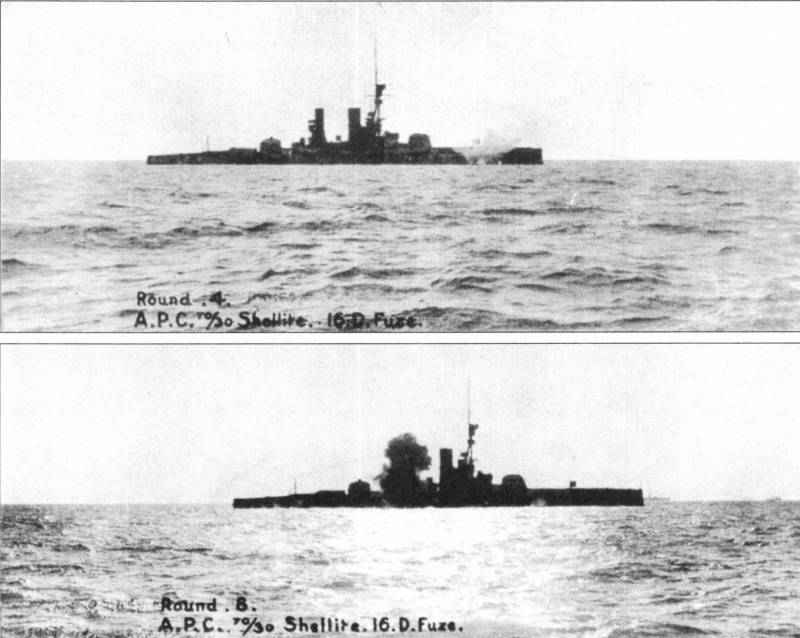
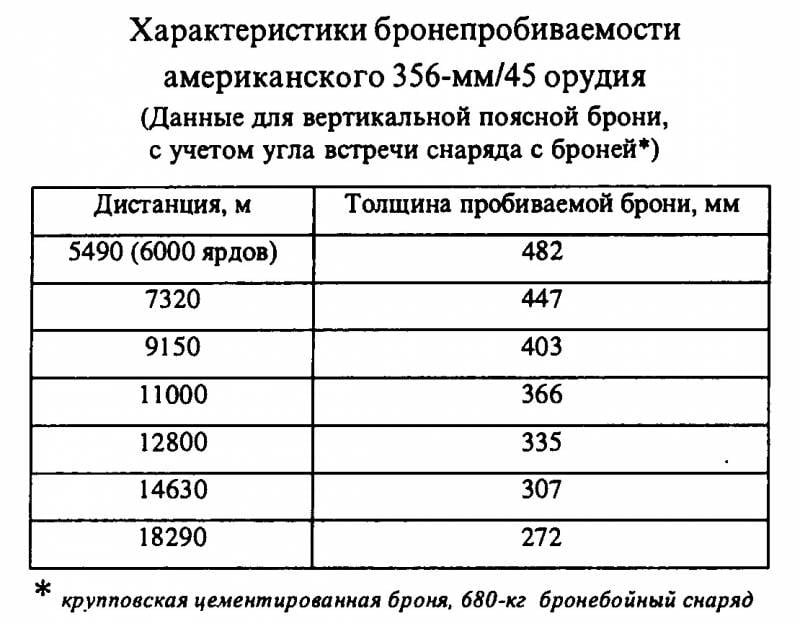
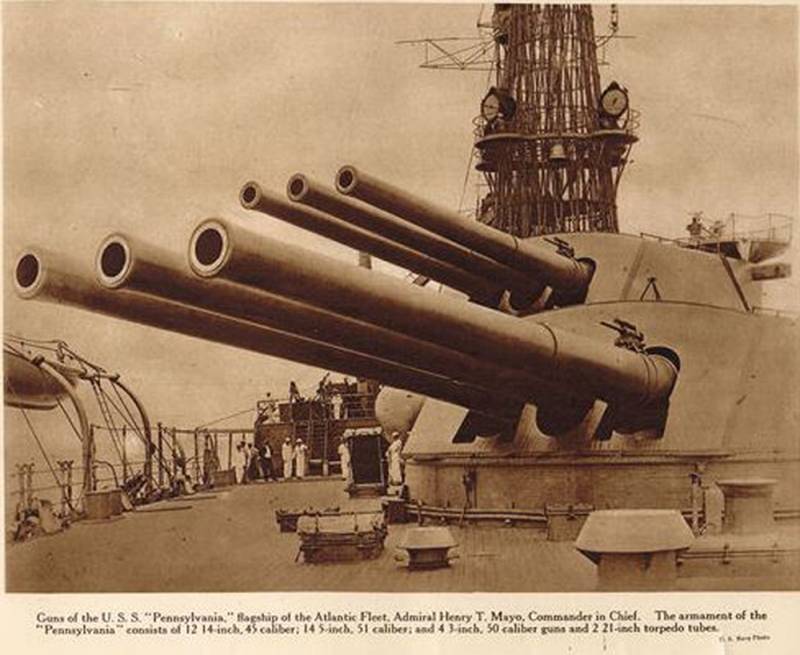
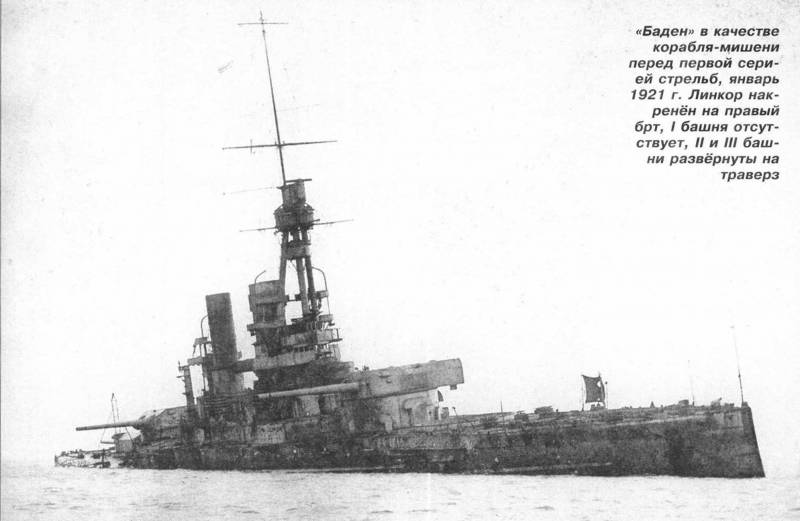
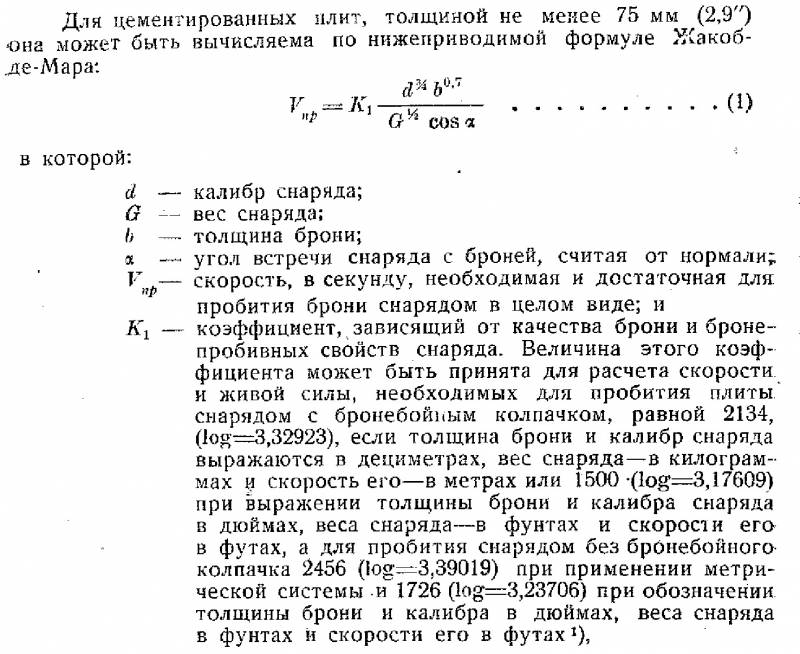

Information